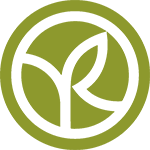
PLANTS FOR INDUSTRIAL OR TECHNICAL USE - Yves Rocher Ethnobotanical Collection
Numerous consumer products - textiles, insecticides, tobacco, oils, fertilizers - are made from plants.
In Europe, linen and hemp represent natural textiles. Linen has been used in France since antiquity and is still, today, the largest producer in the world. The economic importance of this crop has become evident in its vocabulary ex. linen, lingerie and linceul (shroud). Hemp was used extensively until the 20th century, most notably in the marine industry for ropes and sails. Here words also are a testament to its presence: canvas, canebière...
Cotton is the most ancient fibre used by man and is still the plant most widely and still occupies 60% of the world market sales even with the increase in synthetic fibers. There are many other plants used to produce more economic alternatives, such as: ramie or nettles from China (clothes, paper), jute (coarse sacks), Dakkan hemp, sisal, banana silk, raffia and coconut (coarse rugs).
Oil producing plants are represented by colza (carburants and plastics), ricin (engine lubricants and hydraulics) and lin seed oil (paints and varnishes).


